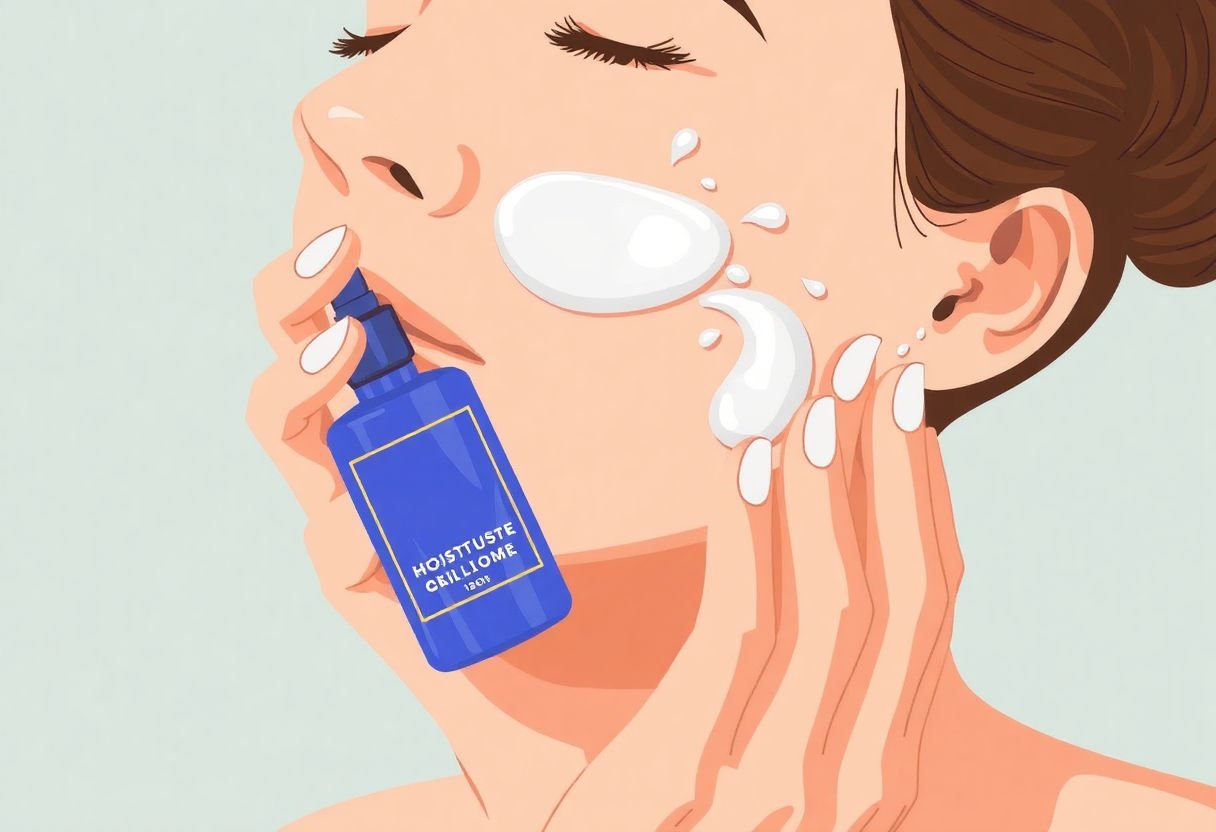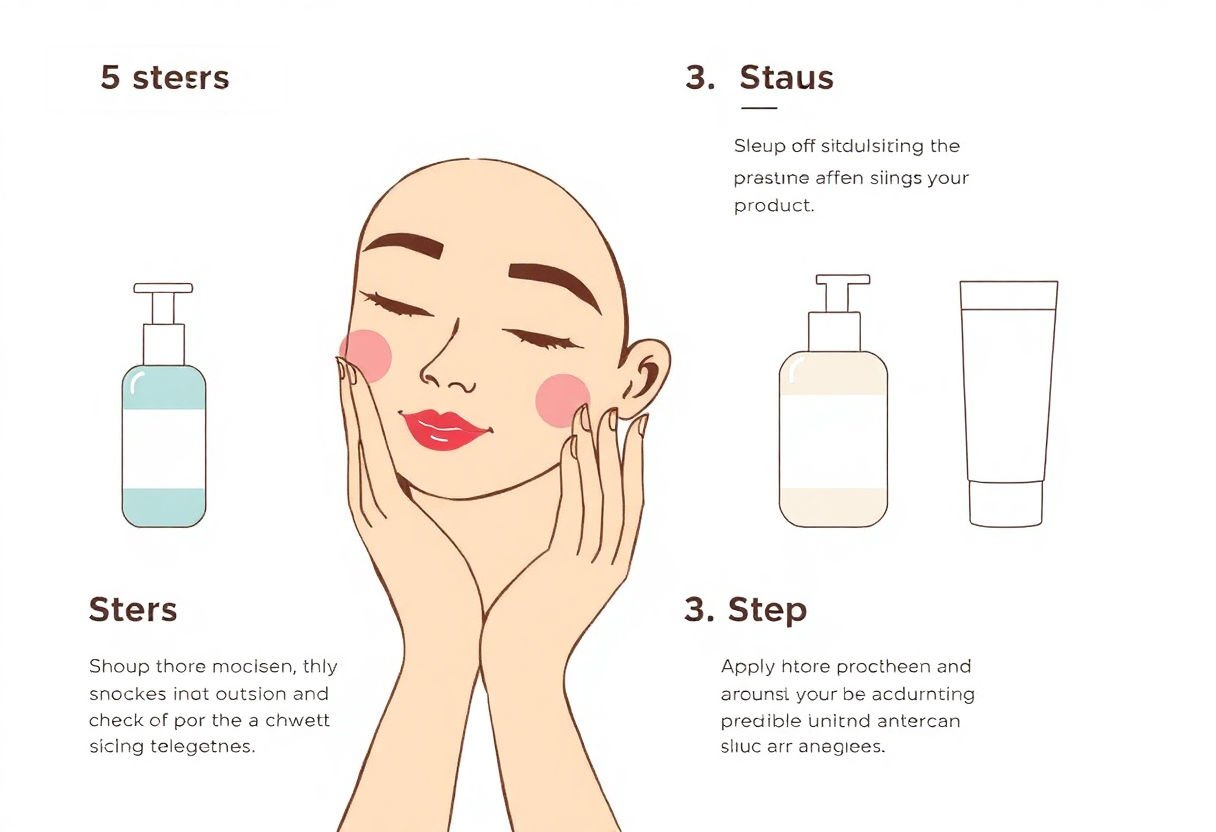Moisturizer and retinol. Two powerful skincare products. But combining them can be tricky. This guide covers how to use them for the best results. You will learn about the correct way to layer them and what to avoid. Understand why they work well together with science-backed facts. Discover the best types of moisturizers to pair with retinol. Avoid common mistakes while covering all skin types. Decide when to see a dermatologist. Follow these tips to achieve glowing skin, free from irritation. Let’s make your skincare routine both safe and effective.
Key Takeaways
- Use moisturizer to support skin balance when using retinol.
- Layer moisturizer and retinol correctly for the best results.
- Avoid combining retinol with other strong treatments.
- Choose the right type of moisturizer with retinol.
- Adjust your routine for your specific skin type.
Understanding Retinol

Retinol acts like a superhero for your skin. It’s a form of Vitamin A. This tiny molecule works wonders. Imagine it as a coach telling skin cells to behave better.
Benefits of Retinol:
- Boosts Cell Turnover: Retinol helps shed old skin and make new, fresher skin.
- Reduces Wrinkles: With regular use, lines may appear smoother, like smoothing out a crumpled shirt.
- Clears Skin: It helps clear out pores, reducing acne breakouts.
Retinol pushes cells to renew faster. This means more collagen, which keeps skin firm. It fights dark spots, making skin tone even. Unlike some harsh treatments, retinol talks gently to the deeper layers of skin.
Use retinol at night. Skin repairs and regenerates while you sleep. At night, apply a pea-sized amount after washing your face. Use a moisturizer after retinol. This locks in hydration and soothes skin.
Start slowly. Use retinol two to three times a week. Let your skin get used to it. Stretching before a run helps prevent injury. Similarly, a gradual introduction to retinol can prevent irritation.
Important note: Retinol can make skin more sensitive to the sun. Use sunscreen during the day. This protects your skin while retinol works its magic at night.
The Benefits of Moisturizer

Moisturizers play a key role in keeping skin healthy and smooth. They help protect the skin’s outer layer. When the skin loses water, it can dry out and feel tight. A good moisturizer prevents this by locking in hydration.
Think of moisturizer as a shield for your skin. It acts as a barrier, blocking harmful elements like pollution and harsh weather. This shield keeps skin safe and healthy. Healthy skin looks soft and feels comfortable.
Using moisturizer helps keep the skin elastic. As we age, skin can lose some of its stretchiness. Moisturizers help maintain this by providing necessary moisture. This keeps the skin supple and reduces the appearance of fine lines.
Moisturizer can feel soothing. After a long day, applying moisturizer can make the skin feel refreshed. It is like giving your skin a drink of water.
Here is what to look for in a moisturizer:
- Hydration: Choose a product that offers long-lasting moisture.
- Nourishing Ingredients: Look for ingredients like aloe or vitamin E.
- Suitability: Pick a product that suits your specific skin type.
Incorporating moisturizer into a daily routine benefits and supports the skin’s natural defense. It is simple to include, and the skin will thank you for it. Remember: regular use of moisturizer keeps skin looking its best.
The Science Behind Combining Retinol and Moisturizer
Combining retinol with a moisturizer helps your skin in many ways. Retinol speeds up cell turnover. This means it helps new skin cells grow. New skin looks fresh and smooth. However, without moisture, skin can get dry and irritated quickly.
Think of your skin like a sponge. If you squeeze out all the water, it’s hard and rough. But when it’s full of water, it feels soft and plump. Moisturizer works like this for your skin. It holds water in to keep it feeling soft.
When you put retinol and moisturizer on together, they work like a team. Retinol removes old skin cells. This makes room for new, younger ones. Moisturizer then hydrates these new cells. This combo can help slow aging signs, like wrinkles and fine lines.
Here are some reasons why this combination is special:
- Reduced Irritation: Retinol can sometimes make skin red or itchy. Moisturizer calms down these effects.
- Better Absorption: With moisture, retinol can penetrate the skin more effectively.
- Balanced Treatment: Retinol renews the skin, while moisturizer balances the skin barrier.
Experts advise applying moisturizer after retinol to lock in hydration and soothe any possible irritation. This practice keeps your skin feeling smooth and looking vibrant.
How to Layer Moisturizer and Retinol Correctly

To use moisturizer and retinol together, follow some steps for best results. Begin with clean skin. Use a gentle face wash. Pat dry with a soft towel. Do not rub.
Now, let’s talk timing. At night, apply retinol first. Retinol works well in the dark because it breaks down in the sun. Start small. Use a pea-sized amount. Spread it evenly on your face. Avoid the eyes and lips.
Wait a few minutes. Let your skin absorb the retinol. Your skin may tingle a bit. That’s normal. Next, apply your moisturizer. Moisturizer locks in the retinol. It also helps prevent dryness or peeling.
Consider this: retinol is like a sponge for the skin. It gets deeper with the help of the moisturizer. So, aim to balance them. If your skin feels dry or tight, try using moisturizer first. Then, apply a thin layer of retinol.
Listen to your skin. It tells you what it needs. Use retinol a few nights a week at first. Increase use as your skin gets used to it. Patience is key. You may not see results right away.
Avoid using products with alcohol or strong acids with retinol. These can irritate the skin. Safety matters. If your skin reacts badly, stop using retinol. Consult a dermatologist if needed.
With care, your skin can enjoy the benefits of both moisturizer and retinol. This routine can help keep your skin smooth and glowing.
Types of Moisturizers Best Suited for Retinol
Choosing the right moisturizer for retinol can make a big difference in your skincare routine. Retinol can sometimes dry or irritate the skin, so using a good moisturizer helps keep it calm and hydrated.
Types of Moisturizers:
-
Creamy Moisturizers: These are thicker and provide a good barrier. They work well, especially if your skin feels dry after retinol. They lock in moisture and help prevent flaking.
-
Gel Moisturizers: These feel light and get absorbed quickly. They’re great if you have oily skin but still need hydration. They offer a cooling effect, soothing the skin.
-
Moisturizers with Hyaluronic Acid: Retain water in your skin, providing deep hydration without clogging pores. Your skin will feel plump and refreshed.
-
Moisturizers with Ceramides: These help strengthen the skin barrier. If retinol makes your skin sensitive, ceramides will help reduce redness and discomfort.
-
Fragrance-Free Options: Look for those without scents or strong chemicals. This reduces the chance of irritation, making them perfect for sensitive skin.
Ingredients to Look For:
-
Aloe Vera and Chamomile: These calm the skin, reducing irritation.
-
Glycerin: Attracts water to your skin, keeping it moisturized.
When pairing a moisturizer with retinol, remember that simple is often best. The right ingredients can help keep your skin balanced and healthy while getting the most from your retinol product.
Common Mistakes and How to Avoid Them
Mixing moisturizer and retinol can bring fantastic results for your skin. But sometimes, people make mistakes. Here is how to avoid them.
Using Too Much Retinol
Too much retinol can irritate your skin. Think of retinol as a powerful tool. Use it wisely. Start with a small amount. A pea size drop should be enough.
Skipping Moisturizer
Skipping moisturizer can dry your skin. Picture your skin like a sponge. It needs water. Moisturizer keeps it soft and happy. So, always use it after retinol.
Wrong Order
Order matters. Always apply retinol first, then moisturizer. Imagine building a house. You need a strong base before the roof. Retinol is the base. Moisturizer is the roof.
Not Washing Your Face
Clean skin helps retinol work better. Wash your face before applying anything. Dirt and oil can block retinol from working right.
Using Retinol in the Sun
Sun makes retinol weak. Never use retinol in the sun. Use it at night for the best results.
Simple steps will help you use both products well. Enjoy softer, smoother skin by avoiding these common mistakes. Stay consistent and patient. Your skin will thank you.
Best Practices for Different Skin Types

When combining moisturizer and retinol, think about your skin type. Dry, oily, or sensitive skin reacts differently to these products.
Dry Skin
Dry skin may feel tight and flaky. It soaks up moisturizer like a sponge. To help, use a cream with hyaluronic acid or glycerin. These ingredients lock in moisture. Apply the moisturizer before retinol, creating a buffer. This helps prevent irritation from retinol.
Oily Skin
Oily skin often looks shiny and has large pores. It may seem odd to add more moisture, but it’s needed. Choose a lightweight gel with retinol. This adds moisture without a greasy feel. Apply the moisturizer after retinol. This sequence ensures that retinol treats pores and breakouts effectively.
Sensitive Skin
Sensitive skin may turn red easily or sting. Be gentle with this skin type. Start with a fragrance-free moisturizer. It should contain ceramides or niacinamide to calm the skin. Use the moisturizer first, lay down a shield against irritation. Introduce retinol slowly—use it two to three times a week at first. If redness or stinging happens, give skin a break.
Combination Skin
Combination skin is tricky. It has both dry and oily areas. Apply moisturizer to dry areas first, then use retinol on the oily zones. Balance both parts with ingredients like aloe vera for a soothing effect.
Understanding these practices lets you tailor a routine that suits you. Each skin type has unique needs, yet the right method leads to healthy skin.
When to Consult a Dermatologist

If you use retinol and moisturizer, knowing when to see a dermatologist matters. Your skin talks to you. Sometimes it may send signals that need expert advice.
Persistent Redness or Irritation: If your face turns red and stays that way, a dermatologist can help. Redness can mean you are overusing retinol or it is too strong for you.
Severe Peeling or Flaking: Some peeling can happen with retinol. But if it is severe, you might need expert guidance.
Pain or Burning Sensation: Pain is a big sign. If your skin feels like it is burning, stop using retinol and see a dermatologist. They can tell you if the product is too harsh.
Acne Worsening: Retinol helps with acne usually. But sometimes, it can make it worse. If this happens, a dermatologist can suggest better options.
Allergic Reactions: Swelling, rash, or itching calls for help. A dermatologist can identify if you are allergic to retinol or another product you use.
Remember, skin is different for everyone. What works for one person may not work for another. Dermatologists specialize in skin. They can help tailor a routine just for you.
Taking these steps ensures your skin stays healthy while using powerful products like retinol.
Conclusion
Combining moisturizer and retinol transforms skincare. Proper application and pairing can lead to smoother, healthier skin. Look at the benefits of each product and adjust your routine. Avoid common mistakes and choose the right products for your skin type. This approach will help prevent irritation and improve overall skin health. Remember to seek guidance from a dermatologist if needed. Embrace these steps, and your skin will thank you.
Frequently Asked Questions
Can I use moisturizer and retinol at the same time?
Yes, you can use both in your night routine. First, apply a moisturizer after cleansing, then follow with retinol. This helps reduce irritation.
How often should I use retinol with moisturizer?
Start by using retinol twice a week and gradually increase to every day if your skin tolerates it well. Always apply moisturizer daily to keep your skin hydrated.
What if my skin feels dry or irritated?
If dryness or irritation occurs, try a thicker moisturizer or reduce your retinol use to once a week. Give your skin time to adjust.
Can I use retinol during the day?
It is best to use retinol at night and make sure to use sunscreen during the day. Retinol can make your skin more sensitive to the sun.
Can people with sensitive skin use retinol?
Yes, but start with a lower concentration of retinol. Be sure to moisturize well and monitor your skin carefully for any reactions.
